Chevron Corrugation
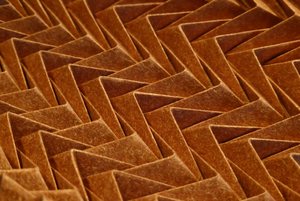
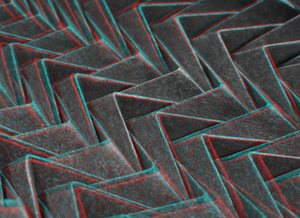
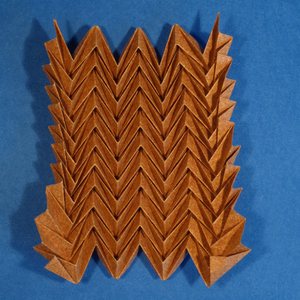
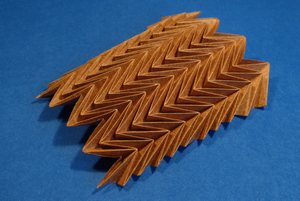
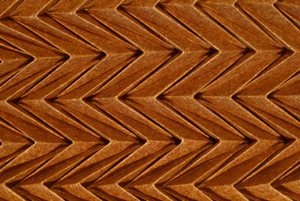
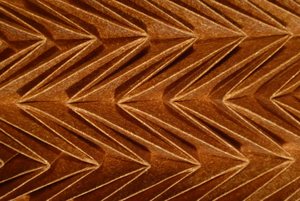
Corrugation, designed and folded by me, but later I learned that Daniel Kwan folded this pattern before, inspired by a similar model by Charles Hoberman (details here). Daniel Kwan pointed me to very interesting patent of Hoberman’s which includes pictures of the corrugation, adapted for folding from thick materials.
Even later, I found a model almost identical to the iso-area version (just the angles seem a bit different) in the Paper and Stick movie by Ron Resch which shows models designed in 1960-66.
This exact pattern (except for being based on 30° rather than 22.5° angles) was also developed by Shuzo Fujimoto. It is CFW 380 — see instructions for exact coordinates for finding it in his books.
Naming different variants
All the different variants of this corrugation consist of rows of chevrons, some of which may be pointing up while others are pointing down. I mark these cases as U and D, respectively, and a dash means moving to the next row. The sequence which describes the plain, non-iso-area variant shown here is simply U. The original iso-area variant can be described as UU-DD, and there are more possibilities such as UD-DU in whose case the 2×2 “supermolecule” marked by the combination of Us and Ds describes the whole pattern, which can be tessellated indefinitely.
Comments